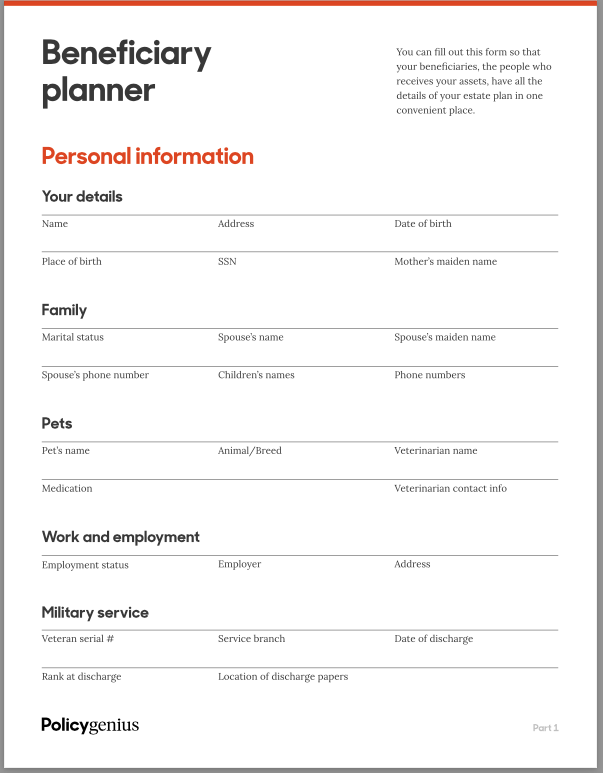From making burial arrangements to closing out bank accounts and claiming life insurance, there are a lot of things to sort out when someone dies. However, it may be a difficult task for the people and loved ones you leave behind to access all of your information or even know what to look for — that’s where a beneficiary planner comes in.
What is a beneficiary planner?
A beneficiary planner is a document you can fill out with all your important personal and financial information to help your future beneficiaries after you pass away.
Many times a beneficiary is also your executor — the person who is legally responsible for managing and administering your estate and disbursing your assets — so this planner can pull double duty as an informational packet for them as well.
Beneficiary planner template

→ Download this free beneficiary planner
Who are my beneficiaries?
A beneficiary is whoever you choose to receive your assets. They can be a family member, friend, and even a business or charity. As part of your estate plan, it's also a good idea to have a few backup or contingent beneficiaries.
You can leave money and personal possessions to your beneficiaries with a will, which also allows you to name a guardian for any minor children.
→ Make a state-specific will with Policygenius for free using attorney-approved tools
